Planting and caring for chrysanthemums
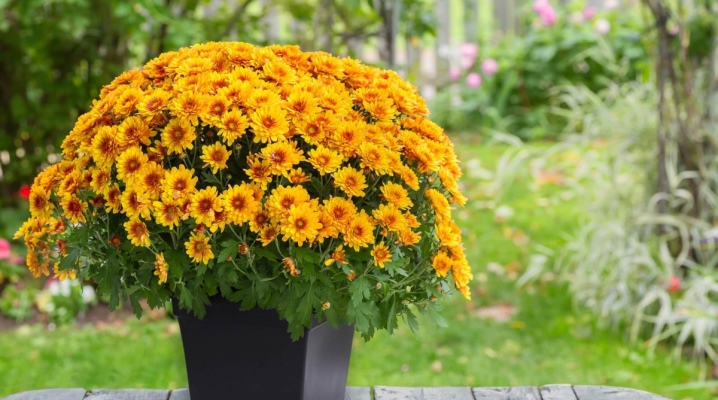
Chrysanthemums are very beautiful flowers, famous for their bright and varied colors. They can be grown not only in a personal plot, but also in a pot at home. Chrysanthemums are considered unpretentious plants that can enliven any environment. In this article, we'll take a closer look at these lovely flowers and learn how to plant them correctly.

Review of works and their terms
Many people choose live plants to decorate their homes. There are many beautiful and vibrant colors that can add color to any setting. Chrysanthemums are recognized as one of the most popular of them. These flowers are unpretentious, but still need competent care. If you plan to keep this plant on your site or plant it in a pot, you should inquire about all the upcoming work.
- Planting or replanting this flower is recommended in the spring. May is ideal for this. But it is important to prepare the soil for planting seedlings in advance - in the fall.
- It is allowed to plant a plant in the summer, at the very beginning. The chosen timing will not affect the growth and health of the flower in any way.
- If you picked up the material for planting only in the fall, then they are allowed to be planted in the ground, but no later than September 15th. This rule must be followed so that the plants have time to take root before the arrival of frost.
- If the material for planting was purchased in October or at the end of September, then you should not plant it in the ground for further wintering. It is best to keep the plants in a warm basement. They should not be removed from there until the spring season.
- From the end of February, the flower is allowed to be moved to a greenhouse and watering more often. The shoots will grow until March, and after that it is allowed to engage in cuttings.
- An already grown chrysanthemum bush must be formed in the spring. For this, long shoots are cut. In the spring, you can resort to dividing the bush.
- Timely fertilization will be required. During the summer season, dressings should be at least 3. For the first time, they are introduced before mid-June, the second time - from the second decade of July, and the third - during the period of active flowering.
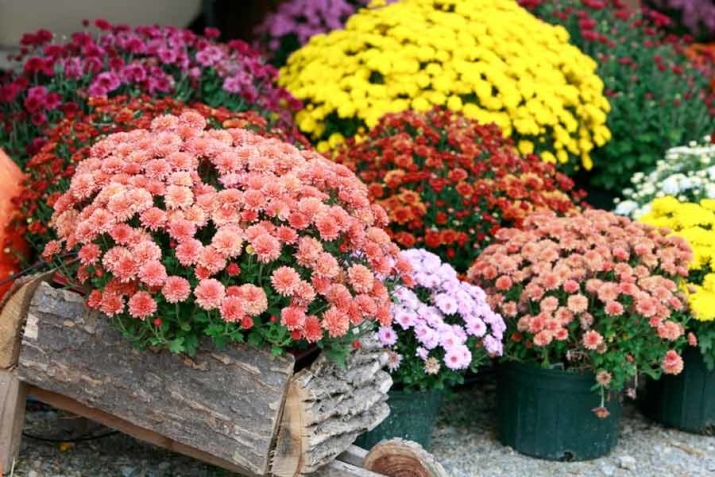
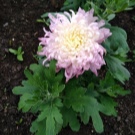

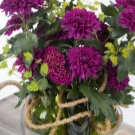
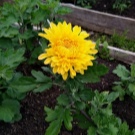

When planting chrysanthemums, it is important to consider which variety they belong to. Care requirements may vary from specimen to specimen. Before choosing a certain variety of these beautiful flowers, you should learn more about it, talk to experienced growers, and study the relevant literature.
Neighborhood in a flowerbed with other flowers
Delicate and light-loving chrysanthemums are rightfully recognized as one of the most incapable of neighbors. They can get along seamlessly with almost any decorative culture, without causing unnecessary trouble for flower growers. The chrysanthemum will be perfectly set off by the handsome sage, coleus, ivy, stonecrop and even garden grasses - against their background, the flowering of the flowers in question will look even brighter and more magnificent. If you want to plant a chrysanthemum next to brightly flowering plants, then you can pick up a spectacular multi-tiered flower bed and plant both annuals and perennials in it: daisies, asters, manadras, dahlias, delphiniums, calendula.

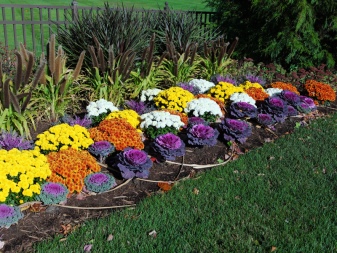
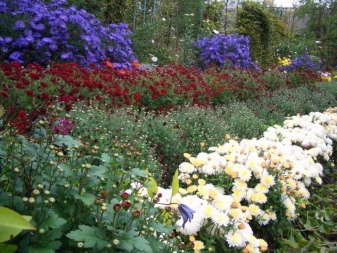
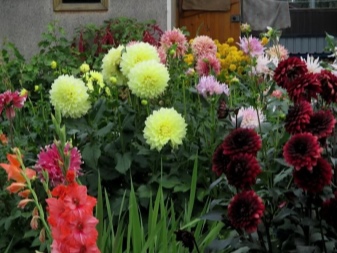
A good solution is to plant assorted chrysanthemums together. If all the buds are multi-colored, then the flower bed will sparkle with colors and will definitely become a chic decoration of landscape design.
How to plant outdoors?
There are many different varieties of chrysanthemums.There are rainbow, terry, ampel, border, creeping, vegetable, spherical, Chinese, Korean varieties. In addition, all chrysanthemums are divided into short, medium and tall species. Having chosen the most beautiful plant for your site, you need to plant it correctly. It is important to find the perfect area to plant this spectacular flower. A win-win place - a sufficiently lit, sunny area. These flowers need at least 3 hours of sun per day. In shade and partial shade, these flowers will also grow, but are unlikely to be large. It is not uncommon for the stems of flowers in such conditions to stretch up too far in search of sufficient sunlight.

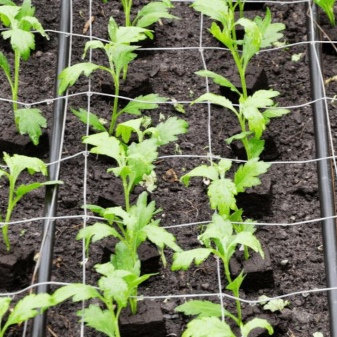
It is important to place the street chrysanthemum that you plan to plant in a country house, in a country house or in a greenhouse in well-fertilized, fertile soil. There should be enough moisture in it. The soil should not be too moist and moist, otherwise the roots will certainly begin to rot, and the sprout will die. Chrysanthemums are not suitable for dry peaty or sandy soil. Lands characterized by an insufficient mineral composition, poorly retaining moisture in themselves, are not at all suitable for these flowers. As mentioned above, there should be no stagnation of liquids either.
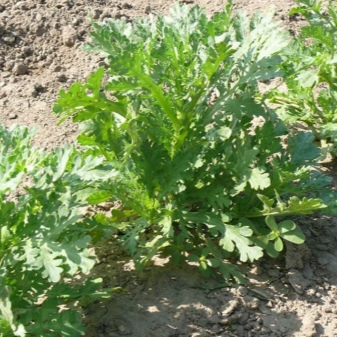
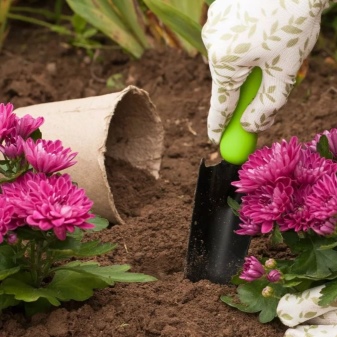
The ideal conditions for the growth of the bushes in question are light sandy loam soil, soundly supported by humus and organic matter. It is advisable to ensure that the soil is drained.
Having found a good place to move the green pet into open ground, you need to attend to the preparation of the soil. When it is weighted, clayey, it is required to add a little sand, peat, humus. It is permissible to measure the components used in buckets. They must be taken in equal parts. If the soil is light and sandy, you will need to add loam, humus and turf soil. Peat-type soils will require major changes - loam and humus must be introduced here.
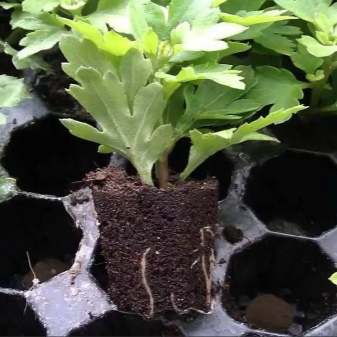
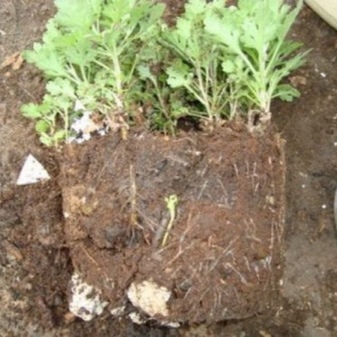
Ingredients added to improve the quality of the soil will need to be properly mixed. The fertile soil layer should be at least 40 cm. It is recommended to plant the flowers in question in the garden on a rainy or cloudy day. It is more convenient to land in prepared trenches, and not in holes. Between them it will be necessary to make indents of 0.3-0.5 m. In order for the planted seedlings to take root as soon as possible, they will need to be shed with a special solution of "Kornevin".
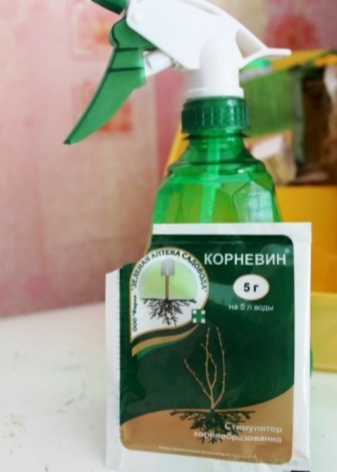

When the chrysanthemums are planted in open ground and watered, it will be necessary to do their pinching. This requires the removal of the growth point. After that, it is best to cover the seedlings with a suitable covering material (lutrasil is suitable). Thus, it will be possible to form a comfortable microclimate required by seedlings for good rooting and growth. As the plant takes root in a new place and grows, the covering element can be removed.
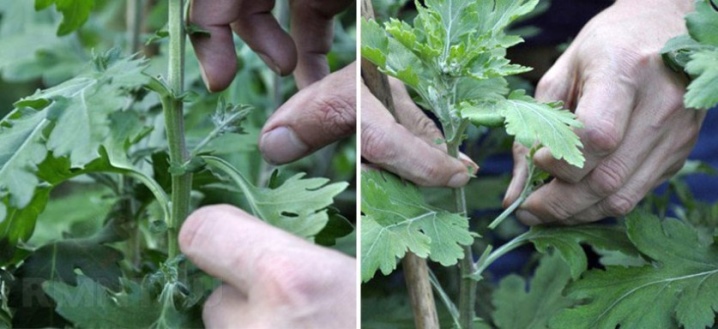
You can plant the planting material not in trenches, but in holes. This is done like this:
- in the selected area on the site, a hole is made in advance for planting (depth 30-40 cm);
- if necessary, drainage is being prepared (part of the sand is poured onto the bottom);
- a bush is placed in the hole, the roots are carefully straightened;
- then backfill is made with fertile soil and everything is compacted well so that the rhizomes are in contact with the ground;
- then it will be necessary to cut the bush by 1/3 or even leave a small stump;
- followed by abundant watering;
- it is necessary to mulch everything with peat and humus.
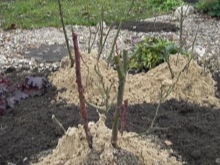
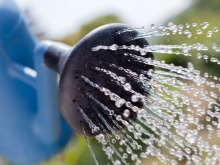
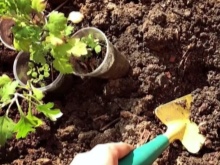
Pot planting rules
Many people choose to grow flowers at home by planting them in pots. If you want to decorate your home with such "green pets", then it is recommended to choose compact varieties - they will not grow too tall (for example, "Crystal" or "Mix"). Most often, people buy popular varieties of Indian, Chinese, mulberry chrysanthemums for home. These varieties are distinguished by rich and beautiful flowering with a large number of variegated flowers.
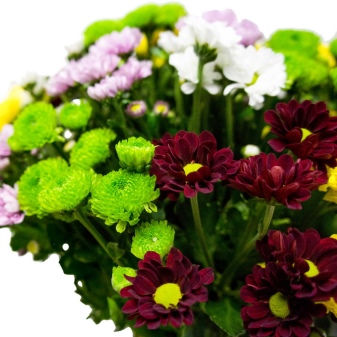

Chrysanthemums are often planted in pots by taking cuttings from previously donated flower bouquets. This is one of the popular methods. You can revive a faded flower and give it a second life. To root the cut stems, you need to remove old leaves, buds that have faded from them. We need to update the branch slice. Then the stalks are put into water with the previously mentioned Kornevin remedy for several days.
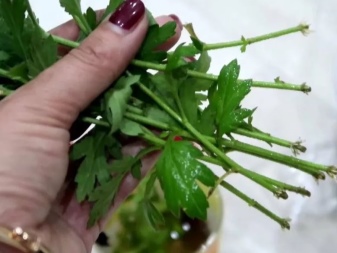
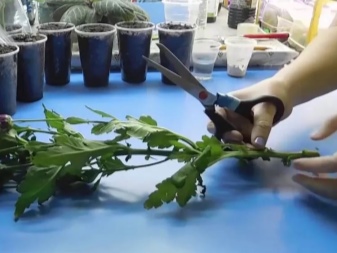
Cuttings are allowed to be placed in a spacious pot after the branches have already released and given roots. The soil mixture in the container must be loosened (you can buy the finished product at a specialized outlet). Several cuttings can be obtained from one stem. It is desirable that their size does not exceed 10 cm. Each stalk must be planted in a separate pot, and then covered with a glass jar - this will create a greenhouse effect.

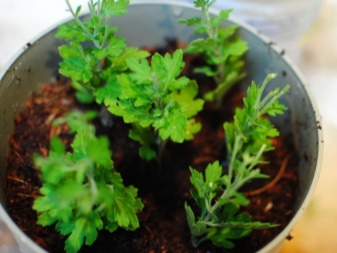
Every day, cuttings in tanks will need to be aired for 1-2 hours. If all the actions were correct, the rooting of the cuttings in the selected pot will begin in a couple of weeks. After that, glass jars can be safely removed. Pots with seedlings are not recommended to be placed on the south side, on the windowsill. Excessive heat and constant aggressive sun will harm a room beauty, just planted in a pot.
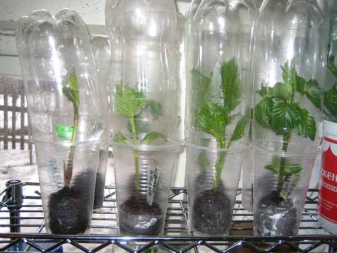
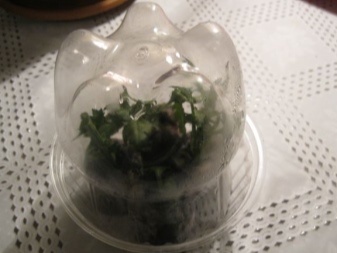
How to care?
For chrysanthemums, regardless of the type and variety, it is important to provide competent and constant care. This culture is considered unpretentious, so gardeners rarely face serious difficulties in caring for it. Let us consider in detail what the care of this non-capricious plant should be.
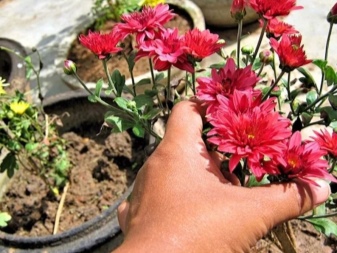
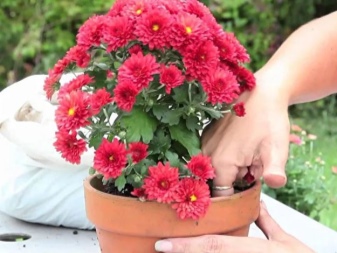
Watering
Chrysanthemums love water, so the substrate in which they grow should always be slightly damp. If we are talking about indoor flowers, then here during the growing season it is necessary to water at least 2 times a week. Overdrying the earthen coma should not be allowed. Stagnation of liquid must be avoided in the sump. If it's a sultry day, watering the flower from a spray bottle will be useful. It is recommended to do this in the morning or in the evening. It is possible not to moisturize the chrysanthemum in the heat, but then it will dry out and will not look so attractive. There are drought-resistant varieties, for example, "Snegurochka", but they still should not be exposed to excessive drying out.
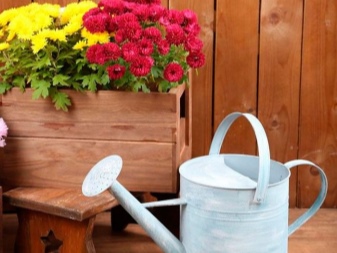
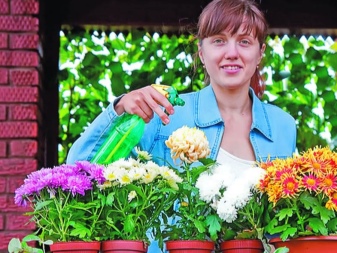
If the flower is planted in open ground, then the irrigation system will be as follows:
- in the early stages of growth, flowers should be watered about 1 time per week;
- it is important to properly soak the upper layers of the soil;
- in the summer, when the temperature rises, watering may be more frequent;
- by the time of flowering in September, watering should be done at least 3 times in 7 days.
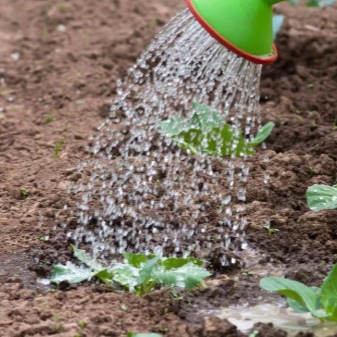
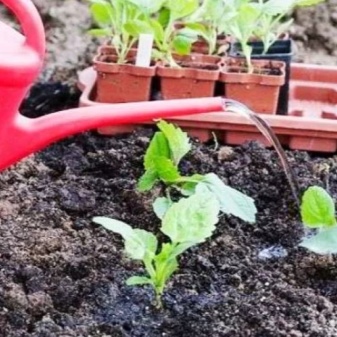
You should be aware that abundant watering is allowed only with a well-drained base.
Top dressing
Chrysanthemums require a wide range of nutrients. These include not only nitrogen, potassium and phosphorus, but also sulfur, calcium, magnesium. Components such as iron and manganese will also be needed. Boron, copper and zinc in small volumes will be useful. Experts strongly recommend feeding the plant in question with a full-fledged fertilizer in the complex. The best formulas are: NPK 5-10-10 or NPK 5-10-5. If the flowers were planted this spring, then a couple of dressings per season will be enough. If chrysanthemums were planted a year or two ago, then they will need to be fed throughout the summer season and in the fall once a month.
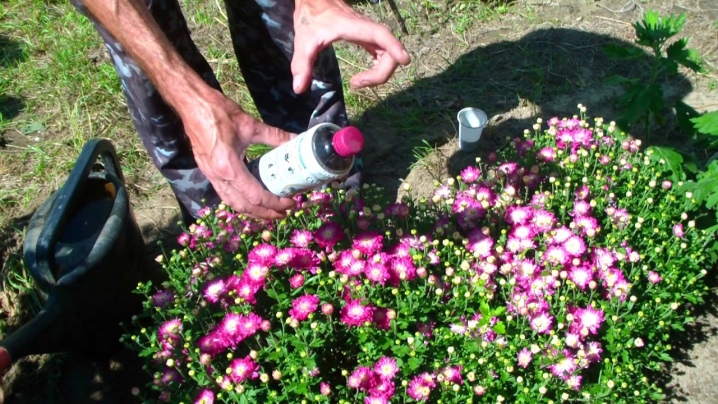
Adult indoor plants need to be fertilized with minerals once every 1.5 weeks. Every 4 days, a mullein solution (1 part of water and 1 part of fertilizer) must be added to the soil mixture where the flower grows. When bud formation begins, feeding stops.
Lighting
Chrysanthemums are short-day plants. They are initially planted so that the petals are not burnt by aggressive sunlight. This flower is very light-loving, but the light should be diffused. If the chrysanthemum is grown at home on a windowsill, then it is advisable to put the pot on the west or east side. This way she will receive the right amount of light, but she will not get burned. On the street, in open ground, chrysanthemums are not recommended to be planted in too dark areas. As mentioned above, under these conditions, flowers will develop poorly and slowly - they will not have enough sunlight.

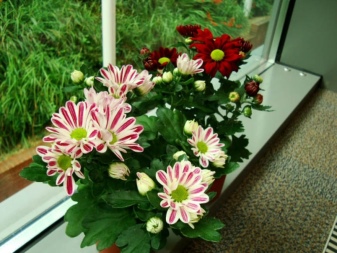
Temperature regime
Most varieties of chrysanthemums do not tolerate frost well. Of course, there are some specimens that are not so afraid of winter (for example, the Korean variety "Dubok"). Consider what should be the temperature regime for thermophilic chrysanthemums:
- for the rapid rooting of these plants, the temperature should be at least 15-18 degrees, and the optimal indicators for most varieties are 22-24 degrees (subject to shading from the direct sun);
- the plants dug out for storage must be removed to the cellar, where the temperature should be from 0 to 4 degrees;
- in cold seasons, when the outside temperature drops below 5 degrees, garden chrysanthemums need a good shelter from oak or spruce branches;
- indoor plants feel great at a summer temperature of 20-25 degrees, and in autumn - in a room where it can be 15-18 degrees;
- in winter, indoor chrysanthemum can "live" at temperatures from 3 to 8 degrees.
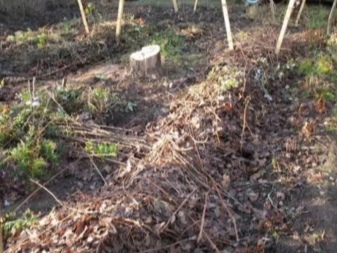
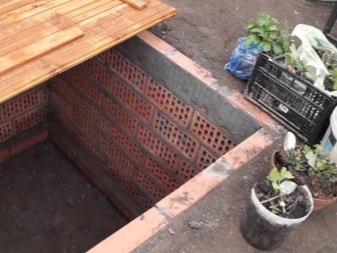
Diseases and pests
Despite their unpretentiousness, chrysanthemums are susceptible to certain diseases. They can also be targeted by dangerous pests. Let us consider in detail what ailments most often affect this delicate plant.
- Verticillary wilting. The fungus first enters the root system of the flower. After some time, the leaves of the affected bush turn yellow, the shoots die off.
- Powdery mildew. A dangerous disease that often affects many of the cultures known today. It is important to identify it in time. The disease manifests itself as follows: on the surface of leaves, stems, buds belonging to diseased flowers, a characteristic whitish bloom appears. It is usually highly visible.
- Rust. Chrysanthemum, affected by this serious disease, has chlorotic specks in all its above-ground areas. After some time, they acquire a brown color. In this case, yellowing of the leaves and thinning of the shoots can occur.
- Gray rot. Brown spots with blurred edges may appear on the plant. After a while, a fluffy bloom forms on their surface, causing active decay.
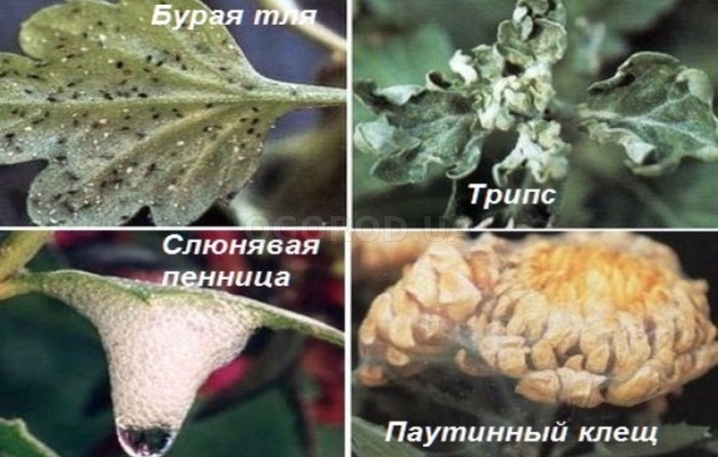
You can get rid of such diseases if you use products that contain copper. So, to combat gray rot and rust, copper oxychloride will be an excellent solution. Rust can be removed with colloidal sulfur or copper-soap emulsion. Bordeaux mixture is effective against gray mold and powdery mildew.
The maximum harm to chrysanthemums is brought by nematodes. If they settled on a decorative bush, then mosaic specks form on its leaves. Further, their color becomes darker. It will be possible to overcome this pest only by preventive measures. In the fall, during transplanting or digging up a plant, it will need to be treated with "Phosphamide", and the soil should be sprinkled with "Formalin". All infected specimens are dug up and burned.
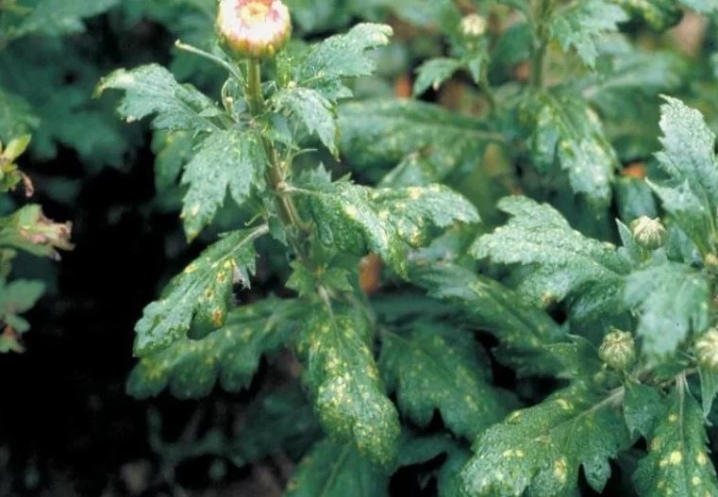
Dangerous for chrysanthemums and aphids. It usually lives on the lower half of flower buds and foliage. Both adult insects and larvae take juice from the sprout, which leads to a slowdown in its growth and flowering. When there are not too many aphids, they can simply be destroyed along with the torn leaves. If there are a lot of pests on the plant, then it is better to treat the bush with a solution of Aktara or Aktellik. Another pest dangerous for chrysanthemums is the meadow bug. This parasite also draws out all the juices from the plants, which makes the buds stop opening, and the leaves become stained, darken and die off.To heal the bush, it needs to be treated with a solution of baby shampoo (1 tsp for 2 buckets of water). For prevention, it is worth using "Phosphamide".
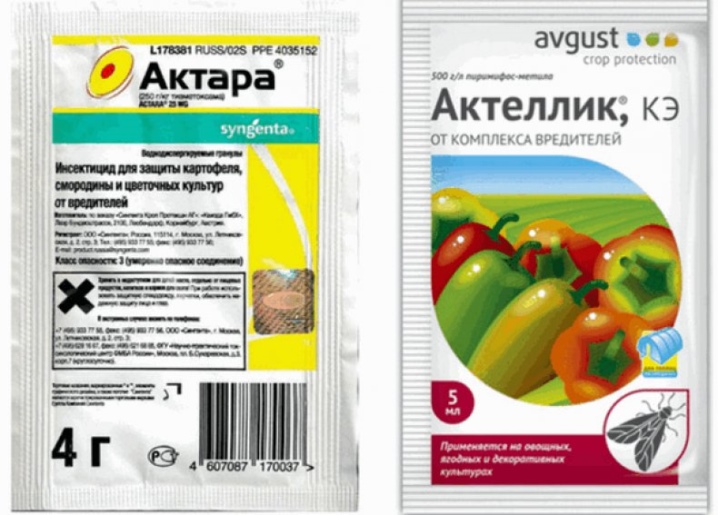
Possible problems
Growing a beautiful chrysanthemum, you need to be prepared for the appearance of certain problems. Here is some of them.
- Diseases and parasites. Common chrysanthemum diseases have been listed above. To ensure that such problems do not lead to the death of plants, they must always be closely monitored. The condition of the flowers should always be under the control of the grower. At the first "hints" of some kind of ailment, it is necessary to immediately take on its elimination.
- Slow growth, small flowers. If you notice that the flower is growing too slowly, and its flowers are too small, this will be a signal that it does not have enough sunlight.
- Drying of the flower. If the drying leaves are not removed during the flowering period, the plant may dry out. We must not forget about proper watering. Chrysanthemums love moisture, but not excess moisture.
- Rotting roots. Due to such a problem, the plant may die. Usually, this is caused by inappropriate soil or excessive moisture of the flower.
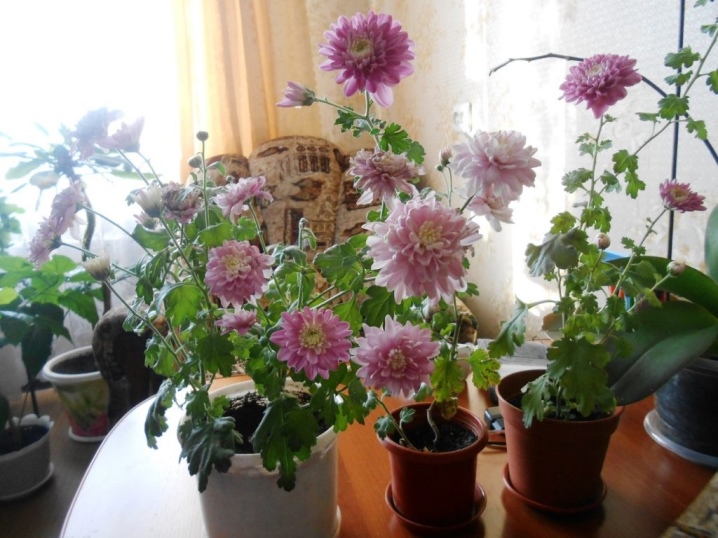
Chrysanthemum will not create any problems if you care for it correctly. You must carefully consider all the rules for growing this plant.
Advice
If you are planning to plant such a beautiful and vibrant plant at home or on a plot, you should take on board some useful tips and tricks for growing it.
- Chrysanthemum bushes, which were grown in a greenhouse using the appropriate technology, must also be dug up in late autumn, like large-flowered or hybrid varieties.
- It is always necessary to adhere to the agricultural technique of the described culture. Otherwise, whole thickets of chrysanthemums can grow on the site or in flower beds, which dramatically increases the risk of fungal diseases.
- In winter, chrysanthemums require special care. If the selected place on the site is low, then it is recommended to dig out grooves-drainages near the flower beds before sheltering the plants. A great danger for chrysanthemums in the winter season is represented by high humidity, an ice layer on leaf blades, and soil freezing. If multilayer shelters are used, they must be removed in a timely manner in the spring.
- Carrying out any manipulations with such colors, you must be as careful and careful as possible. It is important not to damage the roots of the flower. Otherwise, it may not take root in its place and simply die.
- If you want to get large upper flowers, you should resort to such a procedure as pinching. To do this, you need to thin out the chrysanthemum buds on the sides.
- When feeding chrysanthemums, it is important to ensure that fertilizer solutions never fall on the leaf plates of the flower, and do not lead to burns. You can water the plant exclusively at the root.
- Burnt mullein and chicken droppings are good top dressing, but growers need to be very careful - it is better not to feed the flower a little than to burn it with excess fertilizer.
- Care must be taken to ensure that chrysanthemums are not overgrown with weeds. They need to be removed in time.
- If you plant several chrysanthemum bushes at once, then between them it is imperative to leave a distance of about 30-50 cm. We must not forget that this culture usually grows very much.
- If you grow tall, large-flowered flowers on your site, then at some point they must be tied to pegs. If this is not done, the plants at high altitudes will simply break or fall over.
- For watering the considered flowers, it is best to use either settled or rainwater. After each watering, it is advisable to loosen the plants so that a dry crust of the earth does not form.
- There is no point in insulating large-flowered specimens, since they cannot be left for wintering in the open field.They need to be dug up and moved to a separate flesh storage facility until spring.
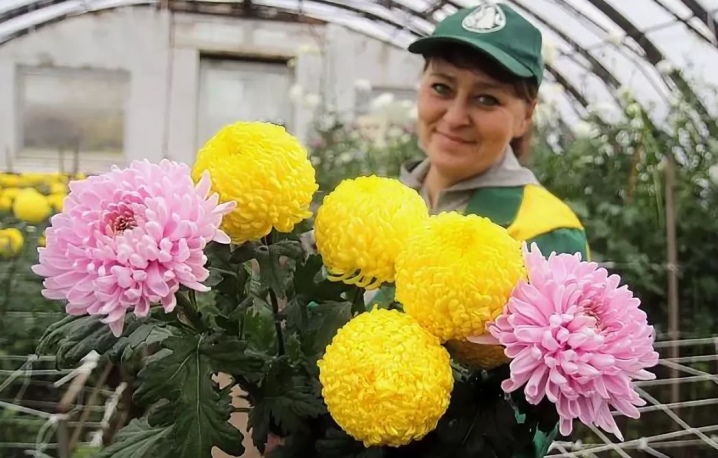
For information on how to properly plant and care for chrysanthemums, see the next video.







































































































The comment was sent successfully.